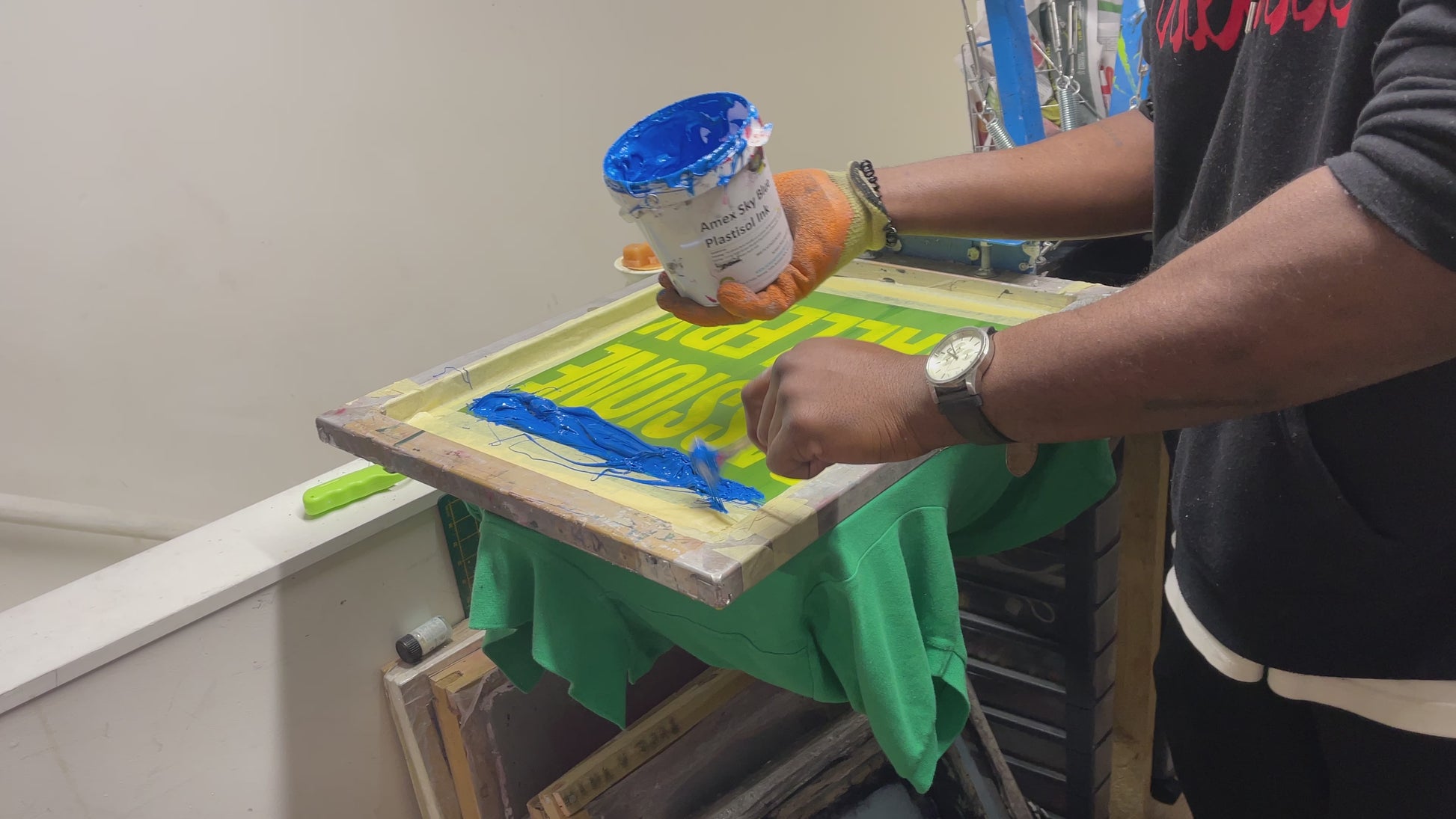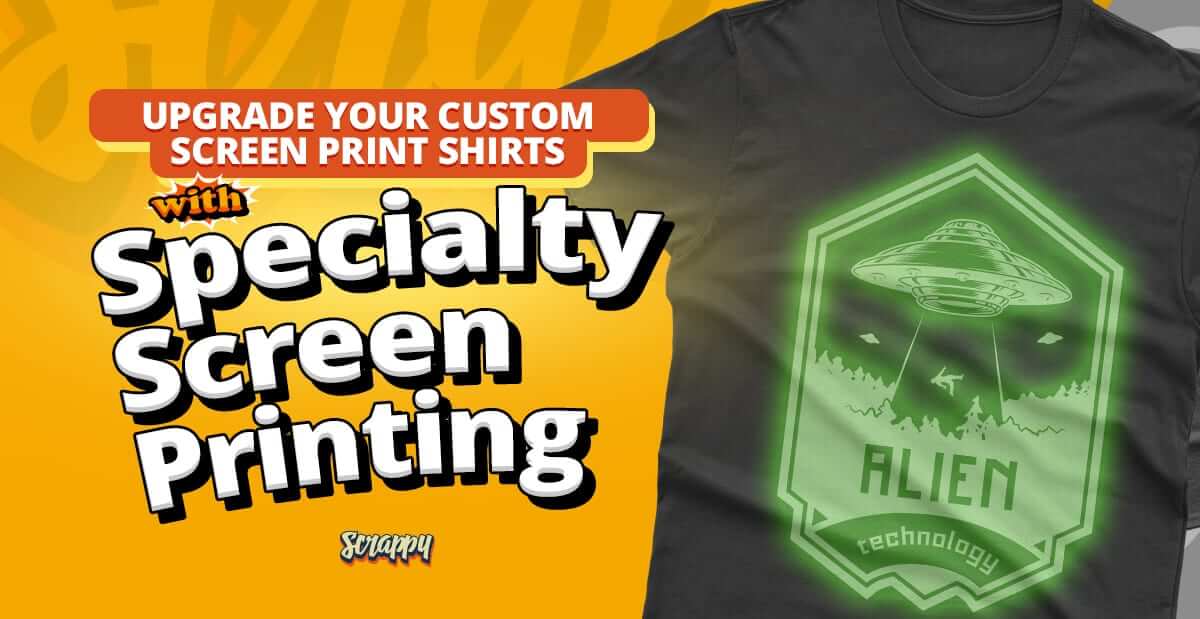Best Local T-Shirt Printing for Personalized Apparel
Best Local T-Shirt Printing for Personalized Apparel
Blog Article
Screen Printing Uncovered: Every Little Thing You Need to Know Regarding T-Shirt and Garment Printing Methods
If you have actually ever questioned exactly how those vibrant designs wind up on your preferred tee shirts, you're in the right place. Screen printing is a remarkable method that incorporates art with method, offering limitless possibilities for creativity. Comprehending the fundamentals, from tools to ink choices, can substantially influence your outcomes. All set to explore the important elements that make display publishing an art type? Allow's discover the information that can elevate your tasks.
The Essentials of Screen Printing: Exactly How It Functions
When you plunge right into screen printing, you'll discover it's both a scientific research and an art. At its core, screen printing includes creating a stencil, or screen, that allows ink to pass via only in details locations.
Next, you'll blend your inks and prepare your printing surface. Placement the display over the textile, then utilize a squeegee to press ink with the display onto the garment. This procedure requires precision, as you want clear, vivid prints. After printing, you'll cure the ink with warm, guaranteeing it follows the material and lasts via cleans. Each step is necessary, and understanding them will elevate your screen printing skills, transforming simple garments right into one-of-a-kind, meaningful items.
Types of Screen Printing Techniques
Once you comprehend the basics of display printing, it's time to explore the various methods that can elevate your layouts. One preferred technique is standard screen printing, where ink is pressed via a stenciled screen.
If you're aiming for great information, consider discharge printing. This method eliminates color from the fabric, leaving a soft, vintage look. One more alternative is plastisol printing, understood for its resilience and brilliant colors, making it a favorite for numerous brands. Experiment with halftone printing to produce slope results and detailed layouts. Each technique has its special appeal, so don't hesitate to try them bent on locate what fits your design best!
Essential Devices for Display Printing
To accomplish magnificent lead to display printing, having the appropriate devices is basic. You'll need a strong screen printing frame, which holds the mesh that transfers your design onto the garment. Next, invest in high-quality squeegees; these are important for applying ink equally across the display. You'll likewise require an excellent exposure system to develop your screens, as well as a washout cubicle for cleaning them after usage. A reliable warmth source, like a conveyor dryer or warmth press, is critical for curing your prints to assure long life. Do not fail to remember a proper work space, outfitted with tables and storage for your supplies. Safety equipment, such as masks and gloves, will certainly maintain you safe from chemicals and inks. With the right devices, you'll be well on your method to creating professional-quality prints.
Choosing the Right Inks and Products
When picking inks and products for display printing, you need to take into consideration the type of ink that works best for your task. Assume regarding material compatibility to ensure your styles look great and last long. Check out environment-friendly ink options to make your printing process much more sustainable.
Kinds Of Screen Inks
Selecting the best screen ink is necessary for achieving dynamic, durable prints that fulfill your job's demands. There are several kinds of screen inks to check out. Plastisol ink is preferred for its flexibility and convenience of usage, offering outstanding color opacity on dark fabrics. Water-based ink, on the other hand, uses a softer feel and is eco-friendly, making it optimal for those looking to lessen their ecological impact. Release inks remove color from the material, leading to a soft, vintage appearance yet need specific handling. Finally, specialized inks, such as metal or glow-in-the-dark, can add special results to your designs. Evaluate your task requirements and choose the ink that straightens ideal with your preferred end result.

Fabric Compatibility Considerations
Recognizing fabric compatibility is vital for accomplishing high-quality display prints, particularly since various materials react distinctly to different inks. Constantly check your inks on example textile to guarantee they adhere correctly and maintain shade stability. In addition, maintain in mind that material weight and texture can influence the final result, so picking the best ink and product combination is important for your task's success.
Eco-Friendly Ink Options
Environmentally friendly inks are becoming a prominent selection for display printers who desire to decrease their ecological impact while keeping top quality. When picking inks, consider water-based inks, which are much less harmful and much easier to tidy up contrasted to standard solvents. These inks bond well with textiles, supplying lively results without harmful chemicals. You may additionally check out eco-solvent inks that make use of less unpredictable natural substances (VOCs), making them a more secure option for both your health and wellness and the earth.
Furthermore, try to find inks made from renewable energies, such as soy or vegetable-based choices. By selecting the ideal inks and materials, you'll not only develop spectacular styles yet also add to a more lasting printing procedure. Make the switch, and your prints will certainly show your dedication to the setting!
Preparing Your Layout for Screen Printing

Submit Format Requirements
To ensure your layout looks sharp and dynamic on material, you'll need to pay very close attention to file style demands for screen printing. Begin with vector files like AI or EPS, as they can be scaled without shedding quality. If you utilize raster pictures, opt for high-resolution files, such as TIFF or PNG, preferably at 300 DPI. Avoid using JPEGs, as they can shed clarity when resized. Additionally, make certain your design has a clear background to stop unwanted white sides on your prints. Finally, keep shade modes in mind; CMYK official source is conventional for display printing, so convert your RGB designs accordingly. By following these guidelines, you'll set your art work up for an effective print.
Shade Separation Techniques
Color separation is an essential action in preparing your design for display printing, and grasping it can considerably improve your print quality. You'll need to break your layout into private colors, as each shade requires a different screen throughout printing. Beginning by determining all the shades in your design and develop layers for each one. You can utilize software like Adobe Photoshop or Illustrator to isolate and different colors properly. Be specific to save each layer as a separate documents, commonly in a format like TIFF or PSD. This precision not only guarantees precise shade depiction however additionally simplifies the printing process. By paying attention to shade splitting up, you'll achieve expert and vivid lead to your screen-printed garments.
Resolution and Dimension
Attaining the very best cause display printing begins with guaranteeing your layout has the right resolution and size. Preferably, your art work should go to least 300 DPI (dots per inch) for sharp, clear prints. Your last product could look pixelated and amateur. if you utilize reduced resolution.
When it involves size, take into consideration the measurements of your print area. Layout your art work to match the last print dimension, ideally creating it in the actual measurements you'll be printing. In this manner, you'll prevent any type of unforeseen scaling problems.
Constantly check your layout in both vector and raster layouts. Vector graphics can be scaled without losing high quality, making them perfect for display printing. Preparing correctly will ensure your style looks amazing on every garment!
Step-by-Step Screen Printing Process
Display printing is a dynamic process that enables you to produce vibrant styles on numerous surface areas. To obtain begun, you'll require a display, solution, and your selected ink.
After rinsing the unexposed emulsion, your display is ready. Set it up on your printing surface and straighten your garment under it. Pour ink onto the screen and make use of a squeegee to push the ink via the pattern onto the fabric. Raise the display very carefully and allow the print dry. Treat the ink utilizing heat to assure toughness. That's it! You have actually successfully screen printed your design.
Tips for Effective Display Printing Projects
While you're diving right into your display printing jobs, bear in mind that preparation is vital to success. Beginning by gathering all your materials-- inks, mops, screens, and garments. A tidy work area helps stop undesirable errors, so clean before you start.
Following, verify your artwork is high-resolution and effectively sized for your find more info garment. Check your display for correct exposure and clean it extensively to avoid spots. When blending your inks, follow the supplier's guidelines to accomplish the appropriate uniformity.
During printing, use even stress with your squeegee for constant outcomes. Don't rush; take your time to confirm each print satisfies your requirements. After printing, let your garments dry completely prior to dealing with or packaging them.
Lastly, constantly maintain a sample of your help future reference. This means, you can evaluate your progression and enhance your strategies over time. Pleased printing!

Frequently Asked Inquiries
The length of time Does It Require To Establish a Screen Printing Job?
Establishing a screen printing work usually takes about half an hour to an hour. You'll prepare the screens, mix inks, and adjust the press. The time differs based upon complexity and experience, so stay organized!
Can I Print on Various Material Enters Utilizing the Exact Same Strategy?
Yes, you can publish on different fabric types making use of the exact same strategy, however you'll need to readjust your inks and setups. Some textiles take in ink in a different way, so experimenting guarantees the ideal outcomes for each and every product.
What Prevail Blunders to Stay Clear Of in Screen Printing?
When screen printing, avoid common mistakes like utilizing the incorrect ink, ignoring correct direct exposure times, or skipping pre-press checks. Constantly evaluate your configuration and maintain clean displays to ensure top quality results each time.
How Can I Appropriately Tidy and Keep My Screen Printing Tools?
To properly clean and preserve your screen printing equipment, you should routinely clean screens with suitable solvents, inspect mops for their explanation wear, and guarantee all tools are stored dust-free and dry. Uniformity enhances and stops expensive fixings efficiency.
Is Display Printing Eco-friendly Compared to Other Methods?
Display printing can be extra ecologically friendly than various other techniques, specifically if you utilize eco-conscious materials and water-based inks. By selecting lasting products and practices, you reduce waste and reduce your effect on the world.
Screen Printing Uncovered: Every Little Thing You Need to Know Regarding Tee and Garment Printing Methods
At its core, display printing involves developing a stencil, or screen, that enables ink to pass via only in specific locations. Setting the screen over the textile, then use a squeegee to press ink with the display onto the garment. One preferred method is traditional display printing, where ink is pushed through a stenciled screen.When picking inks and materials for display printing, you require to take right into account the kind of ink that works finest for your job.
Report this page